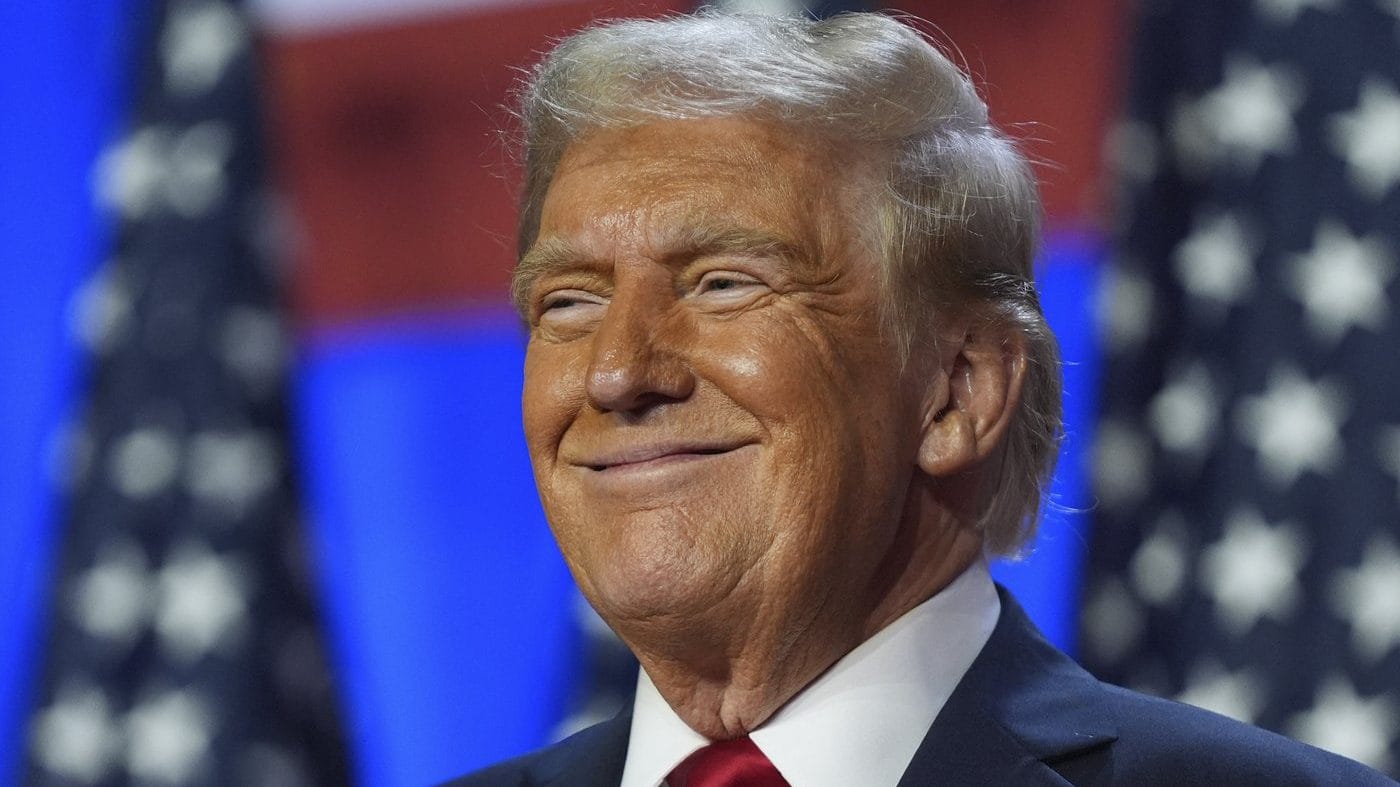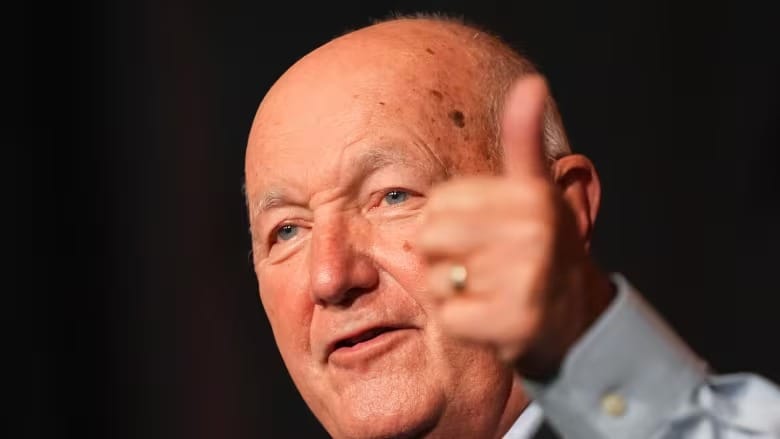U.S. Election 2024: Donald Trump elected 47th President
Despite initial enthusiasm for her campaign, she faced challenges in persuading voters disillusioned with the current administration that she represented a fresh direction.

Republican Donald Trump was elected the 47th president of the United States on Wednesday, marking an extraordinary return to the White House for the former president, who previously refused to concede defeat four years prior.
Trump secured victory after winning Wisconsin, reaching the 270 electoral votes required to claim the presidency.
Throughout election night, Trump maintained a lead over Vice President Kamala Harris in both the electoral college and the popular vote.
The 78-year-old Republican reclaimed key states in Wisconsin, Pennsylvania, and Georgia, and was projected to win in Nevada and Arizona as well.
Trump’s victory over Harris, who was the first woman of color to lead a major party ticket, marks the second time he has defeated a female opponent in a general election.
Harris, the current vice president, became the Democratic candidate after President Joe Biden withdrew from the race amid concerns over his advanced age.
Despite initial enthusiasm for her campaign, she faced challenges in persuading voters disillusioned with the current administration that she represented a fresh direction.
The election concluded a turbulent and highly competitive season, marked by two assassination attempts on Trump and a late shift to a new Democratic nominee just a month before the party's convention.
When Trump takes office on Jan. 20, he will face numerous challenges, including deep political polarization and global issues testing America's role on the world stage.
Trump is the first former president since Grover Cleveland in 1892 to regain the White House. At 78, he is also the oldest individual elected to the office and the first with a felony conviction.
His vice president, Ohio Senator JD Vance, 40, will become the highest-ranking millennial in U.S. government.
Trump declares victory: ‘I will be fighting for you’
Speaking to supporters at his campaign headquarters in Florida early Wednesday, Trump declared victory, pledging he would “not rest until we have delivered the strong, safe and prosperous America.”
“Every single day,” he said, “I will be fighting for you with every breath in my body.”
Known for a career marked by division, Trump also called for unity, stating, “It’s time to put the divisions of the past four years behind us… It’s time to unite.” He added, “We have to put our country first for at least a period of time… We have to fix it.”
Surrounded by important figures in his personal and political life, Trump took the stage in West Palm Beach, Florida.
Former First Lady Melania Trump stood nearby, joined by their youngest son, Barron. Trump’s older children, Don Jr., Eric, Ivanka, and Tiffany, were also present.
Trump’s key campaign advisors, Susie Wiles and Chris LaCivita, joined him on stage, along with political allies like House Speaker Mike Johnson.
Trump also acknowledged celebrities in attendance, including UFC CEO Dana White and golfer Bryson DeChambeau. He praised Elon Musk, the billionaire owner of X, calling him “a new star. A star is born: Elon.”
Supporters at his election night watch party celebrated as results poured in, with cheering, calls, and MAGA hats tossed in the air.
Meanwhile, the Harris campaign ended CNN broadcasts at its election night event at Howard University, with high-energy remixes and synchronized lights keeping the crowd engaged.
What to expect in Trump’s next presidency
Trump’s return to the White House will come with fewer checks on his power. He plans a swift and extensive agenda that could reshape nearly every aspect of the government.
Many of his Republican critics in Congress have been defeated or retired, and federal courts are filled with his appointees. The U.S. Supreme Court, with three justices appointed by Trump, recently issued a ruling granting presidents broad immunity from prosecution.
Trump’s rhetoric and actions during the campaign raised concerns among Democrats and some Republicans about potential threats to democracy if he returned to power. He has praised authoritarian leaders, threatened to use the military against “enemies from within,” warned news organizations over negative coverage, and suggested suspending the Constitution.
Several figures from his first term, including former Vice President Mike Pence and former Chief of Staff John Kelly, have either refrained from endorsing him or issued public warnings about his return.
While Harris’s early campaign emphasized themes of joy, Trump tapped into widespread anger and resentment.
He highlighted frustrations over high prices, crime, and the handling of immigration under Biden. He also pointed to conflicts in the Middle East and Russia’s invasion of Ukraine as evidence of what he described as Democratic mismanagement of a chaotic world.

Donald Trump has pledged to pursue major changes in a second term as president, outlining a broad agenda over the past year in policy statements that combine traditional conservative approaches to taxes, regulation, and cultural issues with a populist slant on trade and a revised role for the U.S. internationally.
Trump's plans also involve scaling back federal civil rights initiatives and expanding presidential powers.
Here’s a breakdown of what Trump has proposed:
Immigration
Trump’s 2016 call to “Build the wall!” has evolved into a plan for “the largest mass deportation program in history.” He intends to involve the National Guard and empower local police to carry out these actions, though he hasn’t detailed how this program would operate or how it would target only individuals unlawfully in the U.S. He has proposed “ideological screening” for new immigrants, ending birthright citizenship (likely requiring a constitutional amendment), and reinstating earlier policies like “Remain in Mexico,” health-based migration restrictions, and bans on certain majority-Muslim nations. This would limit both illegal and legal immigration.
Abortion
While Trump took credit for the Supreme Court’s decision to return abortion regulation to the states, he has not prioritized abortion in his second term’s agenda. For the first time in decades, the GOP platform did not call for a national abortion ban, aligning with Trump’s stance. However, he has not confirmed he would veto national restrictions if they reached him. Some anti-abortion activists still aim to secure a national ban by arguing for fetal protections under the 14th Amendment’s equal protection clause.
Taxes
Trump’s tax policies favor corporations and wealthier Americans by extending his 2017 tax cuts, reducing the corporate tax rate from 21% to 15%, reversing Biden’s tax hikes on high earners, and eliminating taxes from the Inflation Reduction Act that support clean energy initiatives. Additionally, he has proposed new tax breaks for working- and middle-class Americans, including exemptions on tips, Social Security, and overtime wages.
Trade and Tariffs
Trump’s trade stance emphasizes limiting foreign imports. He proposes tariffs of 10% to 20% on imported goods, renewing policies that require essential medications to be sourced from U.S. manufacturers, and restricting Chinese investment in critical U.S. infrastructure.
Diversity, Equity, Inclusion (DEI) and LGBTQ Rights
Trump aims to end diversity and inclusion programs in government and restrict federal funding for organizations promoting these initiatives. His administration would reverse protections for transgender students under Title IX and require official recognition of only two genders at birth.
Regulation and Presidential Authority
Trump plans to reduce federal regulation across industries, specifically to boost fossil fuel production and housing. He would streamline the firing of federal employees by removing civil service protections and limit the federal government’s authority over environmental cases.
Trump also suggests that presidents can control federal spending independently of Congress, potentially leading to legal battles over budget authority. He has also proposed increasing presidential influence over the Federal Reserve, which is traditionally independent.
Education
Trump proposes eliminating the Department of Education while still influencing local schools by conditioning federal funding on their compliance with certain standards. He aims to limit race- and gender-related programs in K-12 schools, take over accreditation of universities, and impose fines on large private endowments. In addition, he proposes a new, tuition-free online “American Academy.”
Social Security, Medicare, and Medicaid
Trump promises to protect Social Security and Medicare, but some of his tax proposals could affect funding for these programs. His approach to Medicaid includes supporting state waivers and work requirements for recipients.
Healthcare
Trump continues to advocate repealing the Affordable Care Act but lacks a clear replacement plan. He has voiced support for involving Robert F. Kennedy Jr., an opponent of vaccines and pesticides, in his healthcare strategy.
Climate and Energy
Trump intends to focus on fossil fuels and reduce the Biden administration's climate initiatives, pledging to end incentives for electric vehicles and lower emissions standards.
Labor and Workers’ Rights
Although Trump frames his administration as pro-worker, his proposals would make it harder for workers to unionize, particularly in sectors like automotive manufacturing, where he has criticized unions over electric vehicle policies.
National Defense and Foreign Policy
Trump’s foreign policy plans include expanding the military and pursuing a missile defense system reminiscent of Reagan-era strategies. He promises to resolve conflicts in Ukraine and the Middle East but has not provided details. His views remain critical of NATO, while he has praised authoritarian leaders, including Viktor Orban and Vladimir Putin.





